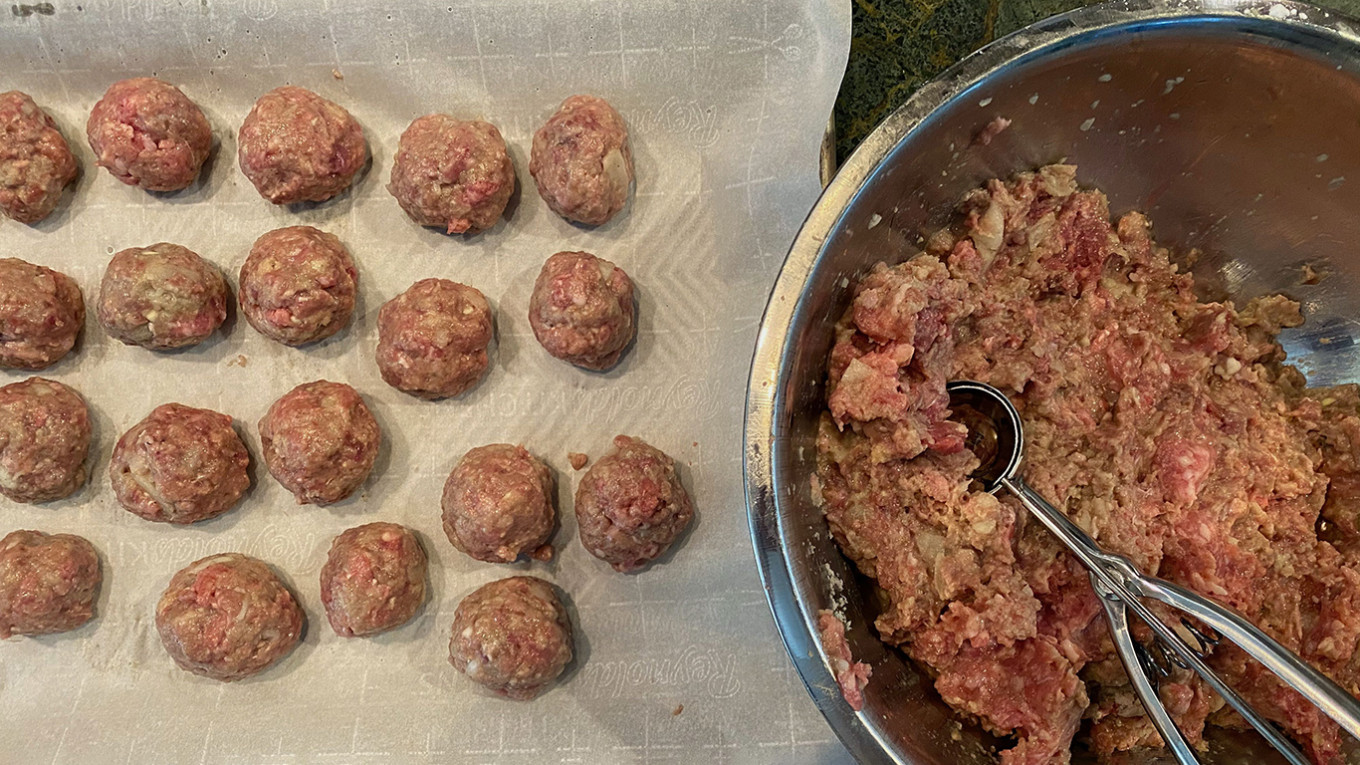In 1703, Tsar Peter I captured the Swedish fortress of Nyen, which guarded access to the River Neva. It was one of the ambitious Russian tsar’s early successes in the Great Northern War (1702 - 1721) in which Russia ultimately smashed Swedish hegemony. On the banks of the Neva, Peter began construction of a new capital, St. Petersburg, his “Window on the West,” and from that time to this Russia’s supremacy in the Eastern Baltic remains unchallenged.
It took Sweden almost two centuries to launch a counterattack, and when it came it was a quiet, but complete rout. IKEA opened its doors in Moscow in 2000, ushering in a marvelous new era of customizable PAX closets, the complete hygge kit of fairy lights, fluffy rugs, scratchy blankets, and every imaginable candle, to say nothing of sturdy but comfortable couches that could double as beds. Russians stopped worrying about how to be a great power and focused instead on the exact dimensions of their kitchens.
What struck me then (as it does now) is the almost magic order IKEA’s layout imposed on the famously law-ignoring Russians. There was simply no way to game IKEA; you might have all the блат (influence) in the world, but you still had to make your way with everyone else through the upstairs show rooms along the orderly one-way route helpfully indicated by huge yellow and blue arrows, before you got to the actual loot downstairs. Knowing someone who knew someone who worked in the warehouse would get you precisely nowhere, and you had to buy the blue plastic holdalls (that essential container of all Russian households) like every other customer.
And then there was the food. Russians like to decry Western fast food: Exhibit A, they say, of a decaying and degraded society. So, it was fun to watch the Russians finding it hard — indeed impossible — to resist the orderly IKEA cafe with its stripped-down aesthetic and limited but utterly delicious and affordable menu of Scandinavian staples. IKEA’s cafeterias are strategically positioned just after the obligatory aspirational showrooms upstairs and right before the retail outlet below, the perfect place to pause, rest, and gather your strength for the challenge to come: to stick to your list and resist all other temptation from plain white plates to relentlessly cheerful pillowcases.
And while you might protest that you were only there for the gravlax (so very good — what do they put in that sauce?) for most people, it was all about IKEA’s iconic Swedish meatballs. Leningradskoye Shosse might be snarled up for hours, while a lethal combination of sleet and snow rendered Moscow as inhospitable as you can imagine, but inside IKEA’s cafeteria, all was light, warmth, and creamy meatballs, washed down with lingonberry soda. An oasis of calm in a hurly-burly world.
Back in March of last year, when most of the world had to go into lockdown to prevent the spread of Covid, IKEA released a version of its meatball recipe, which set the foodie world on fire. Within days there appeared a tsunami of blog posts, online reviews, and even TikTok— well, whatever TikTok does —critiquing, discussing, breaking down, and ultimately ranting about the recipe. An entire subculture became obsessed: had IKEA lied to us? It seemed so unlikely, so totally out of character for the people who gave us that essential piece of household furniture, the two-step wooden stool. But something was definitely missing from those meatballs — something was off. We all agreed: from Seattle to Seoul: IKEA’s recipe for its iconic meatballs was close, but it wasn’t quite right.

I love a culinary puzzle, so with little else to do during lockdown, I opened my spice cabinet and tried to crack the meatball code. I tried Worcestershire Sauce, anchovy paste, tomato paste, allspice, mace, cinnamon, paprika, dill pollen, and coriander in more batches than I care to remember. These spice combinations certainly made the base recipe meatballs taste better, but each trial batch took me further and further away from the signature taste I remembered. Something was still missing. What was it?
“Could it be sawdust particles in the air?” I finally asked a Norwegian friend over Zoom, who just shrugged.
And on that day, I abandoned the obsession, and decided to simply stick with the version my family liked best of the many test batches I had foisted upon them. Combined with mashed potatoes and lingonberry jam, these provided a hearty and delicious meal with lots of lovely leftovers. One day, as I happily consumed a few in my lunchtime grain bowl, it occurred to me that the meatballs were rather like IKEA’s white BILLY shelving: there are tens of thousands of these in Moscow, but it is what I put on those pristine white shelves that makes them uniquely mine.
And so it is with Swedish meatballs, which so effortlessly become exactly what you need them to be: an elegant hors d'oeuvre presented piping hot in a chafing dish at a cocktail party (remember those?) or hastily reheated in the microwave for your children’s stopgap supper. And everything in between. With a polar vortex poised to dump a bunch of spectacular winter weather over Eurasia and North America, meatballs are the perfect recipe for staying in and making life as hygge as possible. The copycat version below is designed to make in batches and freeze ahead of time, if you are so inclined, or to enjoy that day. Follow IKEA’s recipe to the letter if you wish, or try my adaptation, which lightens up the sauce and boosts the flavor of the meatballs. If this culinary encounter has taught me anything, it’s that you can’t obsess over replicating something to the letter.
Except for that gravlax sauce, which I am still determined to crack.

Copycat IKEA Meatballs
For the meatballs
- 1 ½ lb (680 grams) ground beef (85/15 percent fat)
- ¾ lb (340 grams) ground pork
- 1 cup (230 ml) onion, finely diced or grated with a box grater
- 3 cloves garlic, grated on a microplane
- 2 cups (460 ml) fresh breadcrumbs from a good sourdough loaf or baguette.
- 2 eggs
- ¾ cup (180 ml) whole milk
- 1 tsp ground allspice
- 1 tsp nutmeg
- 1 Tbsp kosher salt
- Several good grinds of fresh pepper
- 1 Tbsp olive oil
- Vegetable oil for frying
For the sauce
- 4 Tbsp butter
- ⅔ cup (156 ml) all-purpose flour
- 1 ½ cups (360 ml) beef stock
- 1 ½ cups (360 ml) vegetable stock
- 2 Tbsp soy sauce
- 2 Tbsp Dijon mustard
- 1 tsp white pepper
- 1 tsp paprika
- 1 tsp allspice
- 1 ½ cups (360 ml) heavy cream (or lighten it up by using a combination of whole milk and light cream
Garnish
lingonberry jam

Instructions
- Whisk together the two eggs. Line a baking sheet with parchment paper.
- Knead together the ground meat with the salt, pepper, allspice, and nutmeg.
- Fold in the breadcrumbs, eggs, milk, onion, garlic, and olive oil into the meat mixture and knead with clean hands to combine thoroughly.
- With clean wet hands, form the mixture into small meatballs, about ¾ inch or 3 centimeters in diameter, and place them on the prepared baking tray. Freeze the meatballs for 20 minutes. If you don’t plan to continue with the recipe right away, freeze them for an hour and then store the meatballs in a freezer-safe bag for up to three months.)
- Preheat the oven to 350ºF (180ºC) and line a new baking sheet with parchment paper.
- Heat about 2 Tbsp of vegetable oil in a non-stick frying pan and fry the meatballs in batches, taking care to brown each side. As you finish frying, place the meatballs on the prepared baking sheet. When you have finished, place the meatballs in the preheated oven for 20 minutes to finish cooking.
- While meatballs are cooking, prepare the sauce.
- Combine the stock, mustard, soy sauce, and oil in a saucepan and heat until just simmering.
- Melt the butter in a large saucepan. Add the flour and spices and use a whisk to combine into a roux. Continue to whisk as you cook for 3-4 minutes until the flour smells nutty and turns a golden-brown color. Slowly pour the stock mixture into the roux in ¼ cup (60 ml) increments, whisking vigorously as you do to ensure the mixture doesn’t become lumpy.
- When you have finished adding the stock mixture, cook the sauce for another 2 minutes on low. Then add the cream in ¼-cup (60 ml) increments, whisking as you do.
- Place the meatballs in a shallow serving dish and pour the sauce over and around them. Garnish with parsley and fresh ground pepper.
- Serve the meatballs with mashed potatoes and the obligatory dollop of lingonberry jam!

A Message from The Moscow Times:
Dear readers,
We are facing unprecedented challenges. Russia's Prosecutor General's Office has designated The Moscow Times as an "undesirable" organization, criminalizing our work and putting our staff at risk of prosecution. This follows our earlier unjust labeling as a "foreign agent."
These actions are direct attempts to silence independent journalism in Russia. The authorities claim our work "discredits the decisions of the Russian leadership." We see things differently: we strive to provide accurate, unbiased reporting on Russia.
We, the journalists of The Moscow Times, refuse to be silenced. But to continue our work, we need your help.
Your support, no matter how small, makes a world of difference. If you can, please support us monthly starting from just $2. It's quick to set up, and every contribution makes a significant impact.
By supporting The Moscow Times, you're defending open, independent journalism in the face of repression. Thank you for standing with us.
Remind me later.







